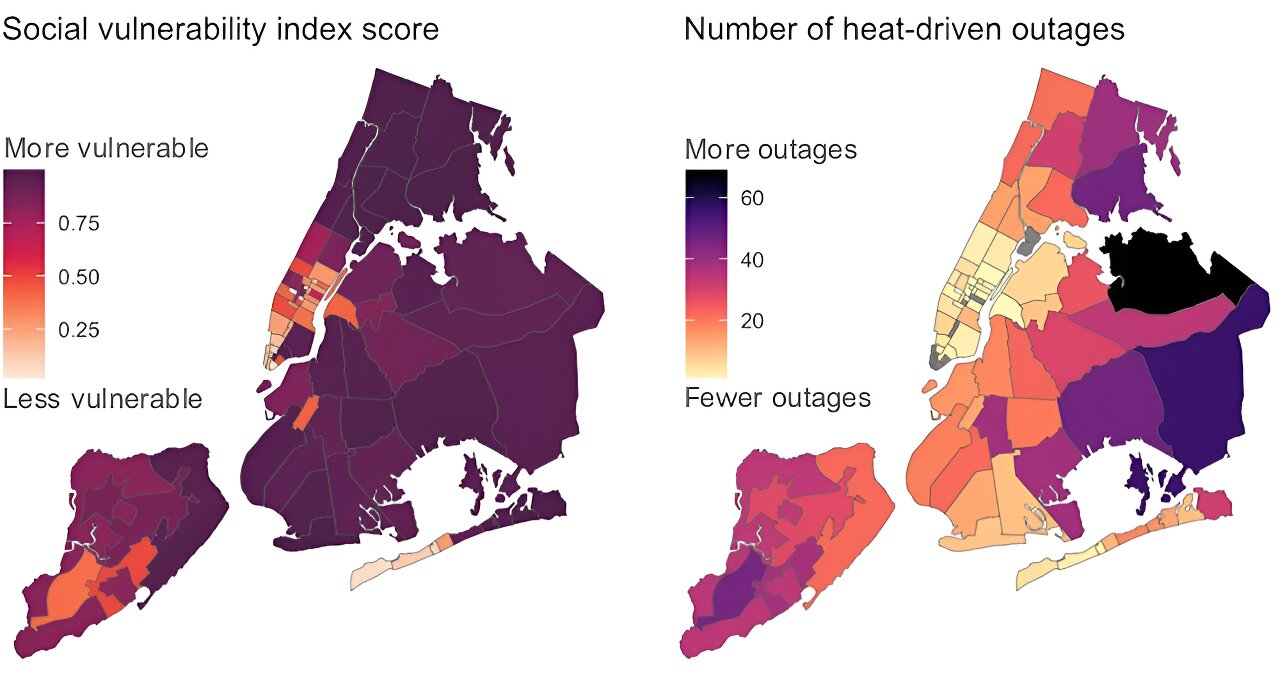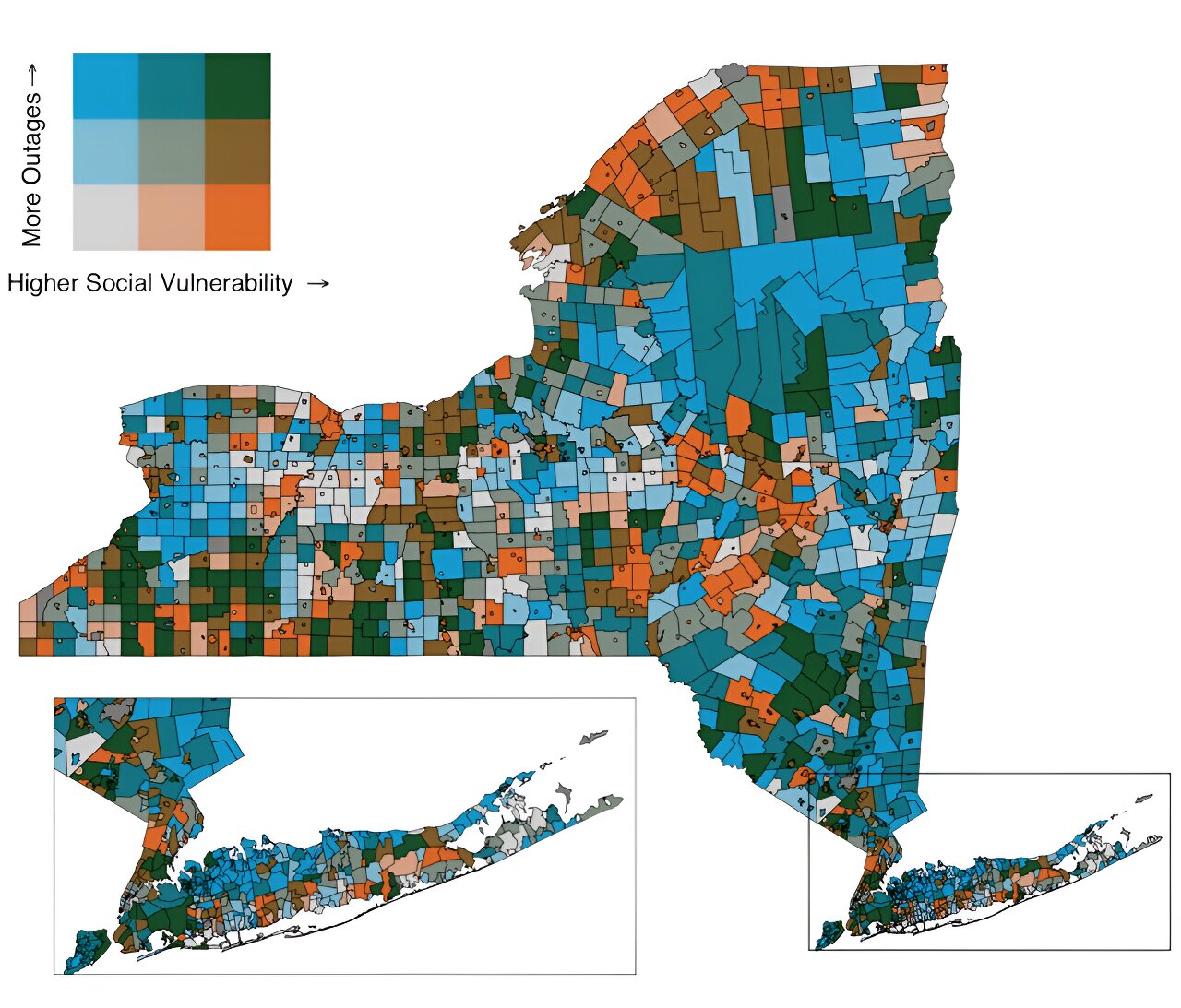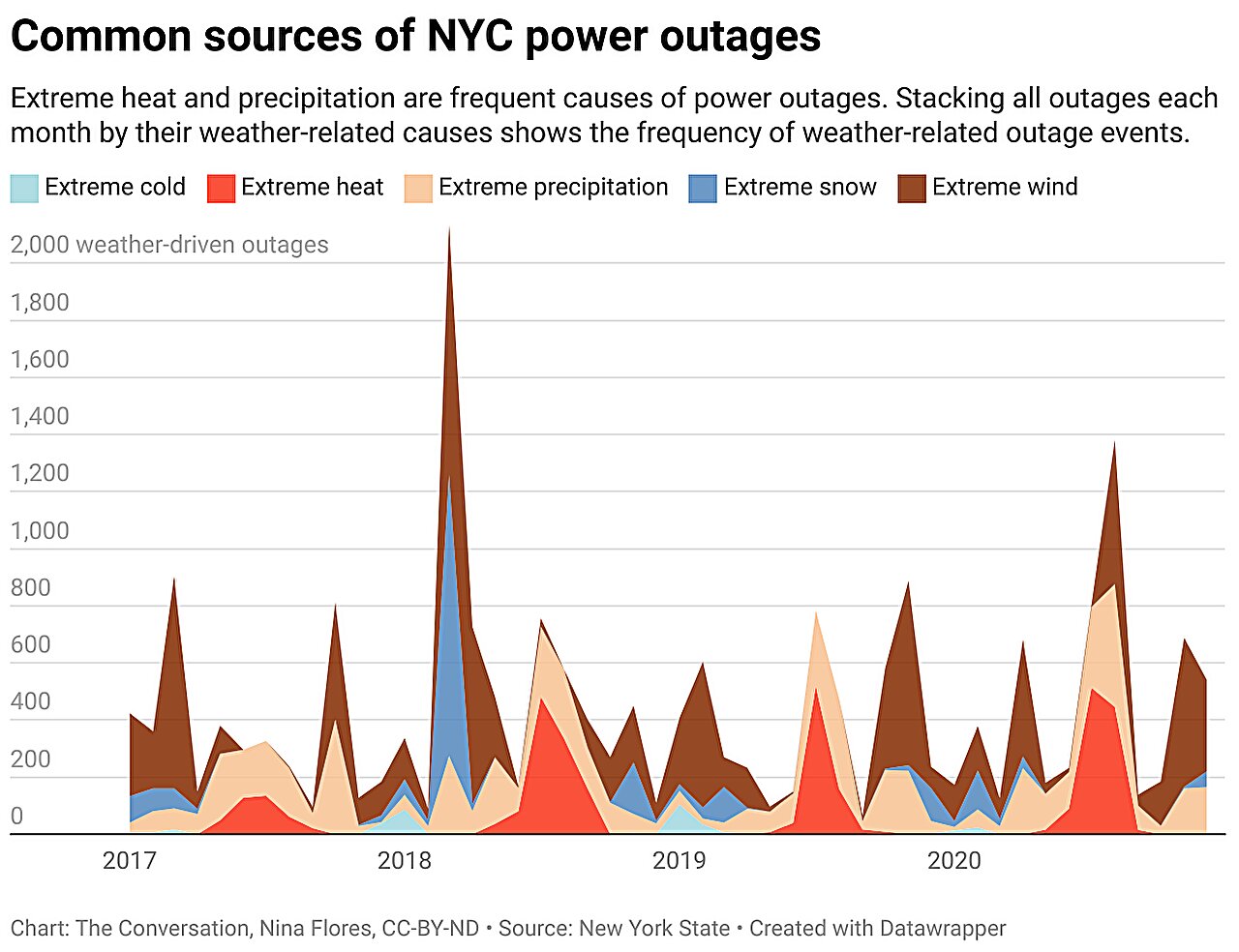Power outages linked to heat and storms are rising, and low-income communities are most at riskhttps://techxplore.com/news/2024-05-power-outages-linked-storms-income.html
Many Americans think of power outages as infrequent inconveniences, but that's quickly changing. Nationwide, major power outages have increased tenfold since 1980, largely because of an aging electrical grid and damage sustained from severe storms as the planet warms.
At the same time, electricity demand is rising as the population grows and an increasing number of people use electricity to cool and heat their homes, cook their meals and power their cars. A growing number of Americans also rely on electricity-powered medical equipment, such as oxygen concentrators to help with breathing, lifts for movement and infusion pumps to deliver medications and fluids to their bodies.
For older adults and others with health conditions, a loss of power may be more than an inconvenience. It can be life-threatening.
We study environmental health, including the effects of extreme heat and storms on people. In a new study, we analyzed data from New York City and the surrounding area to understand how severe weather drives power outages and who is most at risk, particularly in urban areas.
How quickly power returns in a community is often shaped by history.
Discriminatory practices such as redlining and zoning, which prevented nonwhite residents from obtaining mortgages or owning homes in certain areas, left marginalized groups living in more disaster-prone areas with poorer quality infrastructure. Studies show that both factors make these communities more likely to experience prolonged power outages.
Current policies can also exacerbate outages for these populations. For example, many electric utilities prioritize power restoration to regions with community assets, such as mass transit, hospitals, police or fire stations, and sewage and water stations, as well as regions with larger populations.
Though these guidelines appear neutral, they can inadvertently prolong outages for less populated areas and areas lacking resources, including these key assets. For example, following Tropical Storm Ida in September 2021, Con Edison outlined areas with important community assets as priorities for restoring power. Manhattan had power back within hours, while many low-income and largely nonwhite parts of Queens, the Bronx and Brooklyn waited for days.

Across New York state, we found that 40% of all outages from 2017-2020 followed severe weather—heat, cold, wind, rainstorms, snowstorms or lightning—within eight hours. While each type of severe weather alone could lead to prolonged outages, in combination they resulted in much longer outages.
Statewide, for example, strong winds alone led to outages lasting 12 hours on average, and heavy precipitation resulted in outages lasting six hours on average. But when wind and precipitation happened simultaneously, the outages lasted closer to 17 hours on average.
We also looked at whether socially vulnerable communities faced more weather-driven outages than other communities. In short, the answer was yes, though the effects varied in different parts of the state and by the type of weather event.
In New York City, we found that heat-, precipitation- and wind-driven outages occurred more frequently in socially vulnerable communities, including in Harlem, Upper Manhattan, the South Bronx and eastern Queens. This matters because socially vulnerable neighborhoods have higher poverty rates and lower-quality housing. Community members may lack access to health care or suffer from underlying health conditions.
On average, the duration of precipitation-driven outages was longest in areas of the city with the highest social vulnerability. In neighborhoods with vulnerability scores in the top 25%—meaning the most vulnerable neighborhoods—outages lasted 12.4 hours on average, compared with 7.7 hours in those neighborhoods in the bottom 25%.
In rural parts of the state, outages related to downpours or snowstorms were also longest in areas with high social vulnerability.
 Powerless in the storm: Severe weather-driven power outages in New York State, 2017–2020
Powerless in the storm: Severe weather-driven power outages in New York State, 2017–2020,
PLOS Climate, (2024)
https://journals.plos.org/climate/article?id=10.1371/journal.pclm.0000364
